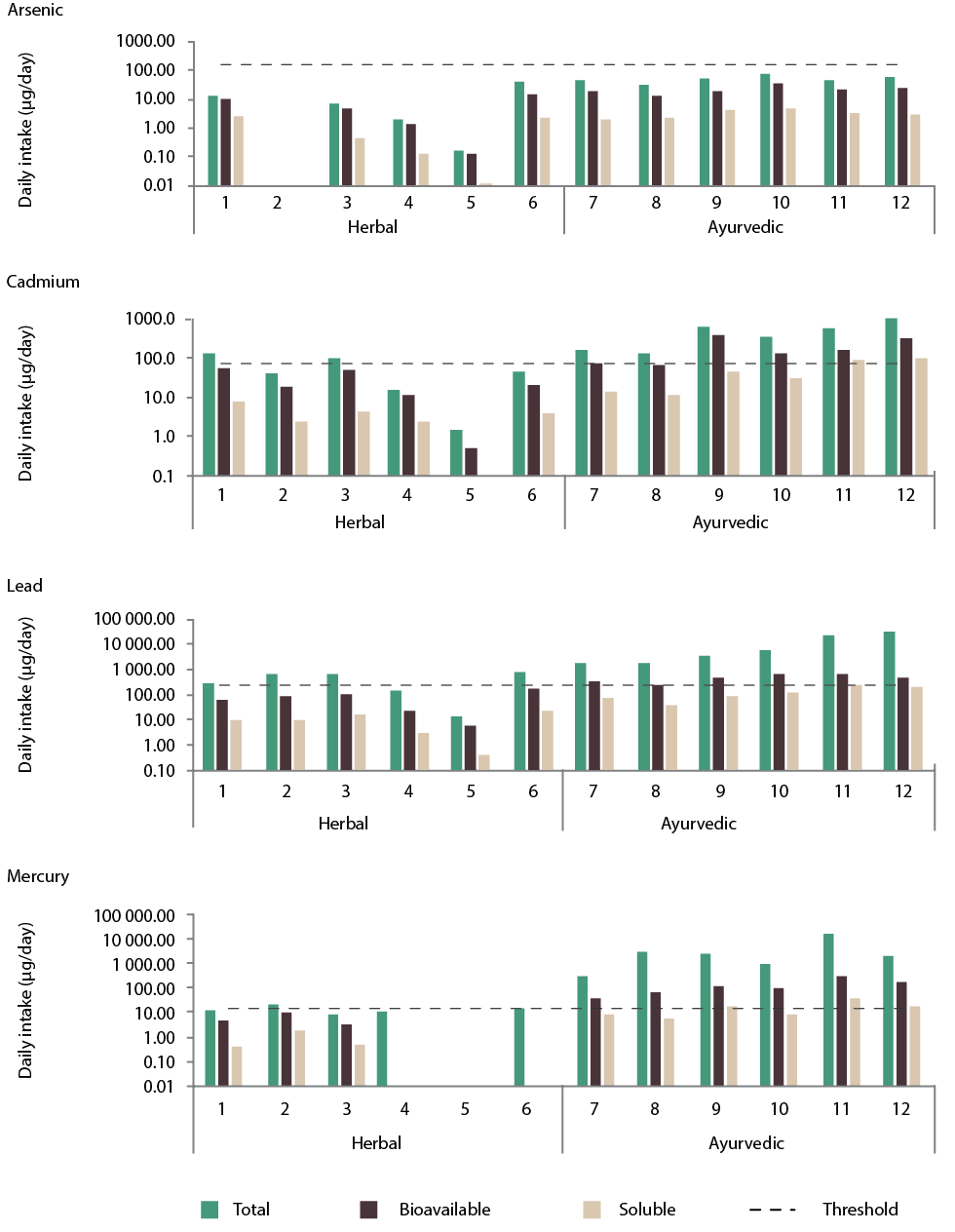Content
Complementary medicines may not complement good health
Complementary medicines may not complement good health
Complementary medicines – also known as traditional, natural or alternative medicines – include vitamin and dietary health supplements, herbal medicines, and traditional Ayurvedic, Chinese and homeopathic medicines. Contaminants in complementary medicines can include pesticide residues, and toxic heavy metal(loid)s such as cadmium (Cd), arsenic (As), lead (Pb) and mercury (Hg).
This study examines the speciation and bioavailability of heavy metal(loid)s in 12 complementary medicines. We hypothesised that the bioavailability of heavy metal(loid)s in complementary medicines relates to the nature of their speciation.
Methods
The study analysed 6 herbal and 6 Ayurvedic medicine samples for (a) total heavy metal(loid) contents, including As, Cd, Pb and Hg; (b) speciation of heavy metal(loid)s using a sequential fraction technique; and (c) bioavailability of heavy metal(loid)s using a physiologically based in vitro extraction test (PBET). The daily intake of heavy metal(loid)s by consuming these medicines, as measured by total, soluble and bioavailable metal(loid) contents, was compared with the provisional tolerable weekly intake of these metalloids, which is set by the Joint FAO/WHO Expert Committee on Food Additives.
Results
The results indicated that Ayurvedic medicines generally contained higher levels of As, Cd, Hg and Pb than herbal medicines. Of the 4 metal(loid)s, the amount of Pb was by far the highest. The sequential fractionation study indicated that organic-bound metal(loid) species dominated the herbal medicines, and inorganic-bound metal(loid) species dominated the Ayurvedic medicines. This indicates that, for herbal medicines, most heavy metal(loid)s are derived from plant uptake, whereas for Ayurvedic medicines, these heavy metal(loid)s are derived from inorganic mineral input.
The PBET data showed that bioavailability was higher in Ayurvedic medicines than in herbal medicines. This means that heavy metal(loid)s added as a mineral therapeutic input are more bioavailable than those derived from plant uptake. There was a positive relationship between soluble metal(loid) fraction and bioavailability, indicating that solubility is an important factor for controlling bioavailability of heavy metal(loid)s in complementary medicines.
The daily As intake values, as estimated by total, soluble and bioavailable metal(loid) contents, are unlikely to exceed the safe threshold level for both herbal and Ayurvedic medicines (Figure 1). However, the daily intake values for Cd, Hg and Pb, as estimated by total and bioavailable metal(loid) contents, are likely to exceed the safe threshold level in certain Ayurvedic medicines.

μg = microgram
Conclusion
This work demonstrates that the bioavailability of heavy metal(loid)s in complementary medicines correlates with the soluble fraction of the respective metal(loid)s. Thus, soluble fractions could be used to predict bioavailability. Heavy metal(loid) toxicity is likely to result from the regular intake of these medicines, which requires further investigation.